GunSpot has talked about the specifics of shooting from cover the right way here on The Armory Life, but we have yet to cover what to do when you run out of ammo and need to reload. Grant and I really wanted to cover this topic after we started discussing reloads and their trending popularity.
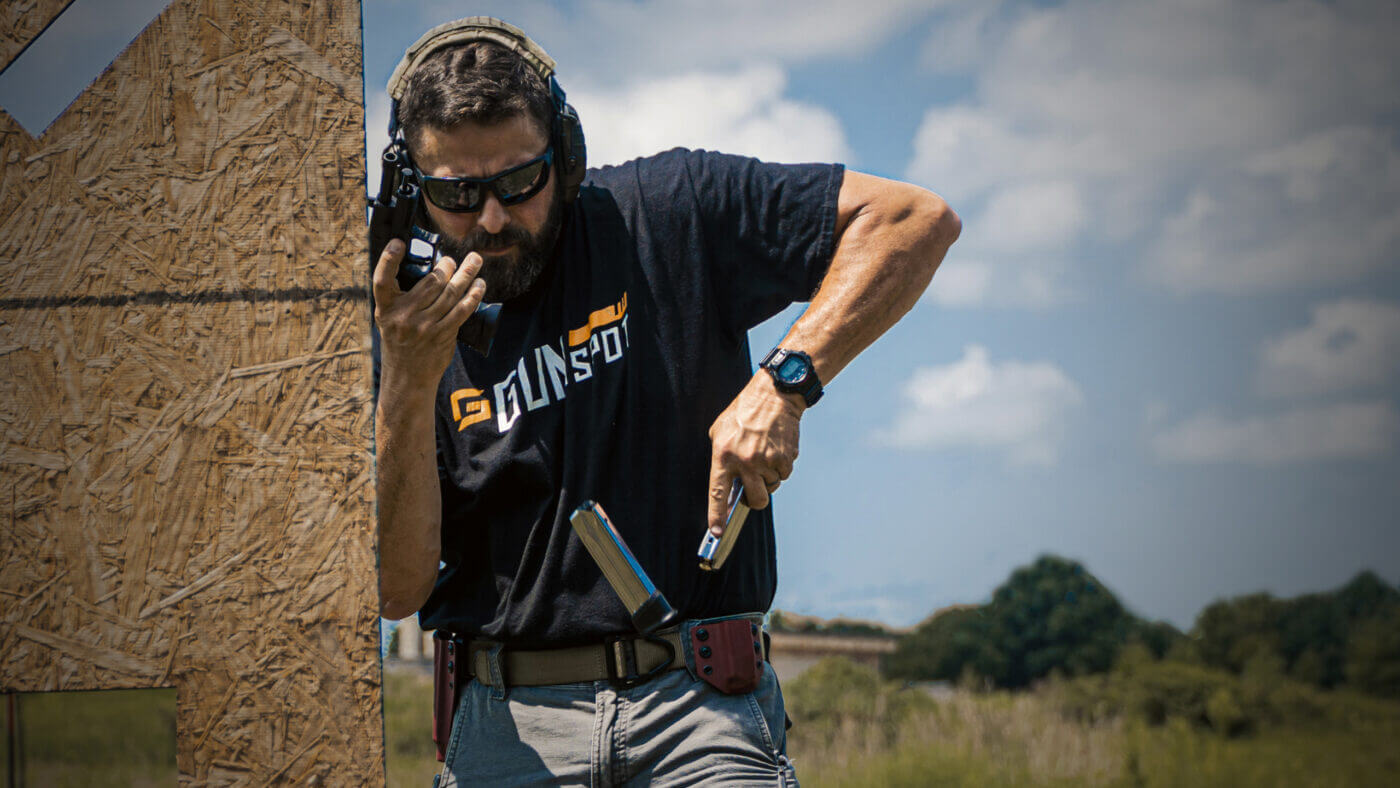
Everybody loves to see a fast emergency reload, and as a result we are all wearing our battle belts at home practicing reloads over and over in our dry-fire training. However, in reality, most “real gunfights” that we’d find ourselves in would be over before your need to reload. Depending on the source you look at, most studies indicate deadly encounters are usually over after two to four shots. Make no mistake, though, reloads should be practiced.
However, we want to encourage you to practice them as if you’re in a gunfight. Think about it — if you are needing to reload, that more than likely means shots are being fired at you, so let’s act like it in our practice.
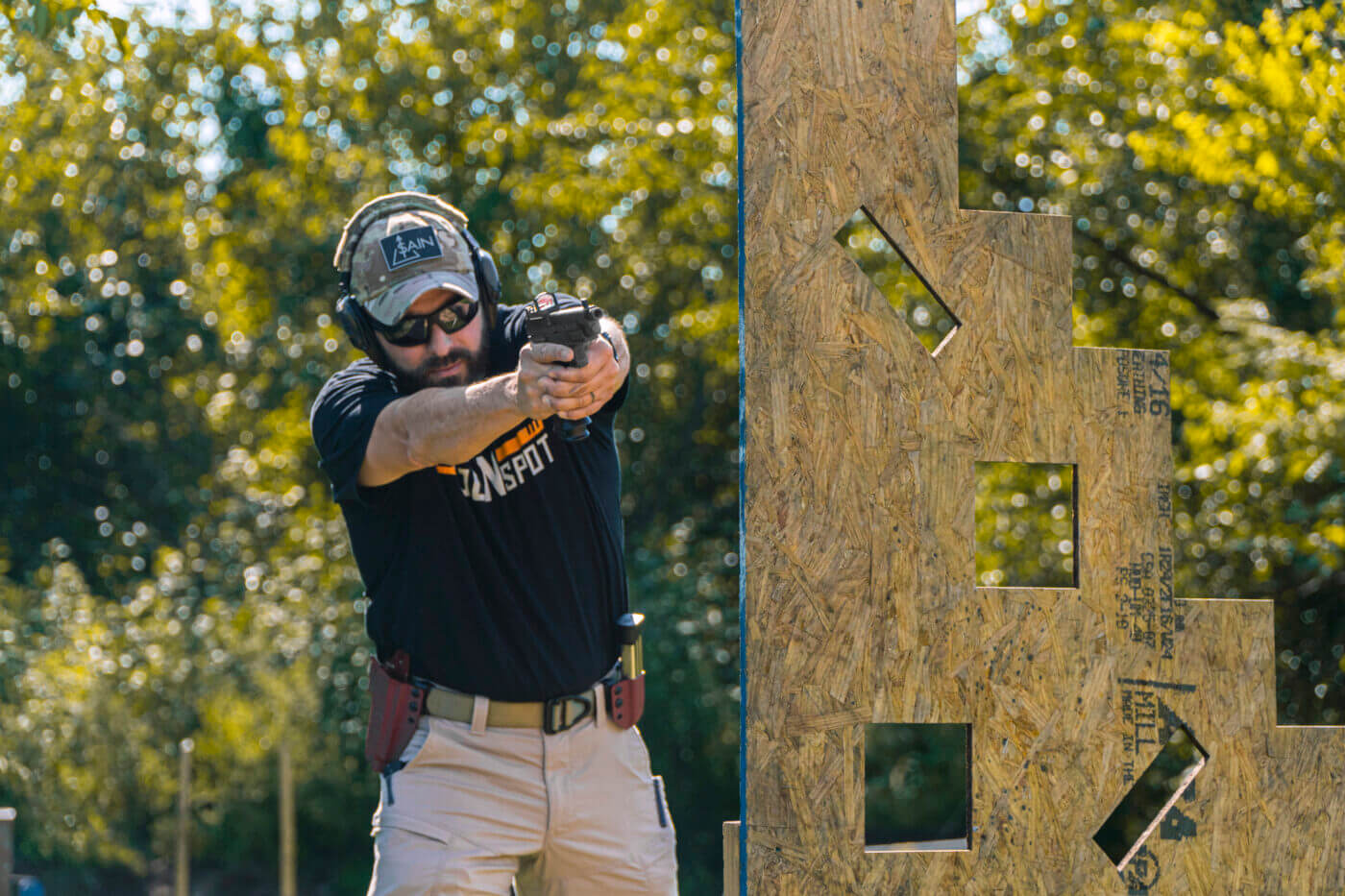
Realistic Concerns?
I, as a lover of movies, can think of several fallacies we see in our favorite films regarding reloads. One of these is reloading out in a wide-open space when cover, or at least concealment, is readily available.
Could there be a time when you need to perform an emergency reload out in the open? Sure. But in the real world we will likely be surrounded by concealment or cover opportunities when a gunfight happens. We have to train to be efficient with objects around us.
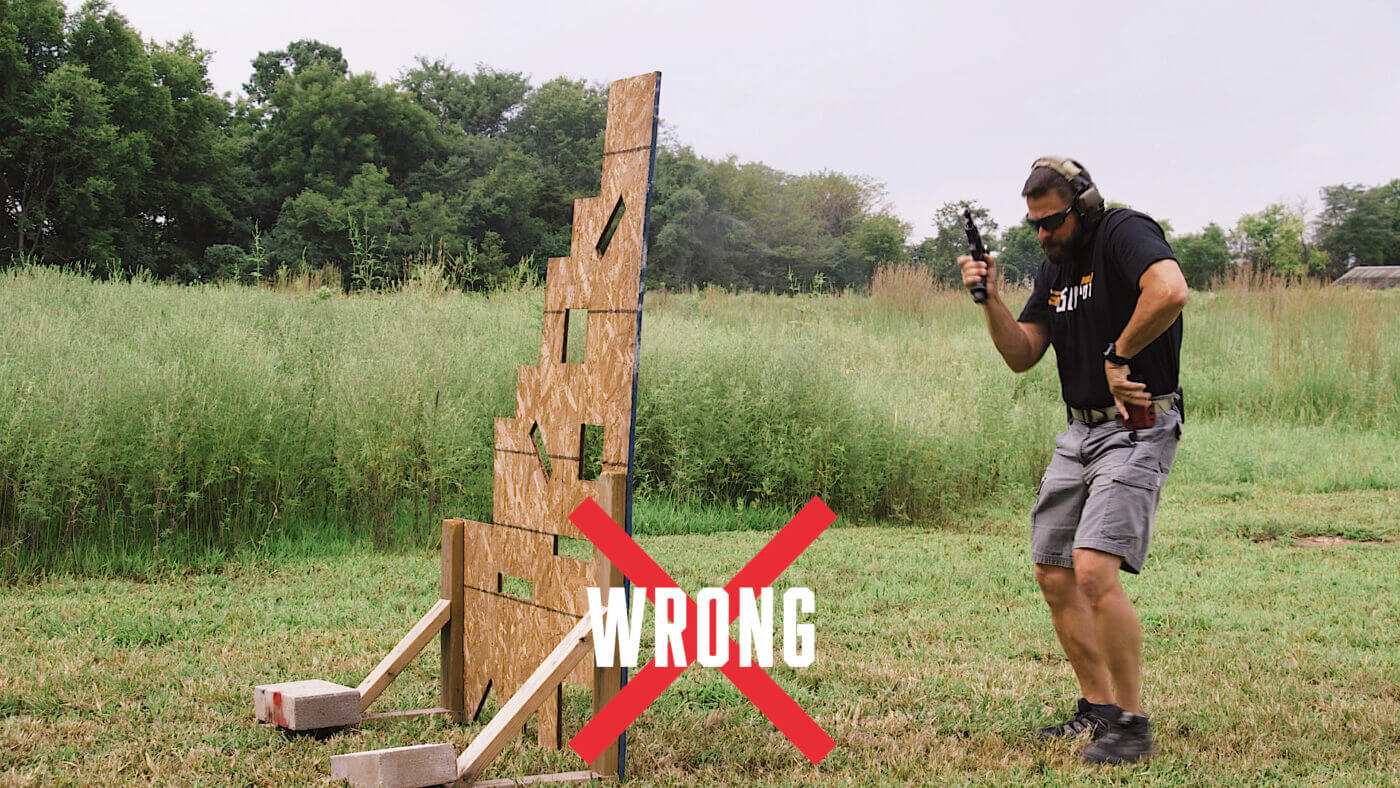
Which brings me to the theme of this piece. Use cover when you reload, and put this into your practice sessions. With 3-Gun competition being a craze, it’s not uncommon to see people practice reloads running between stations or cover and, like I stated, reloading out in the open. That is a good way to get hit in a gunfight.
We need to step back behind cover, conduct our reload and then, if we are behind cover, we need to start slowly slicing the pie around that corner so as to not reveal ourselves openly to the bad guys. If what you are behind is not bullet-resistant cover, also known as concealment, it would be wise to cautiously fall back to a new covered location.
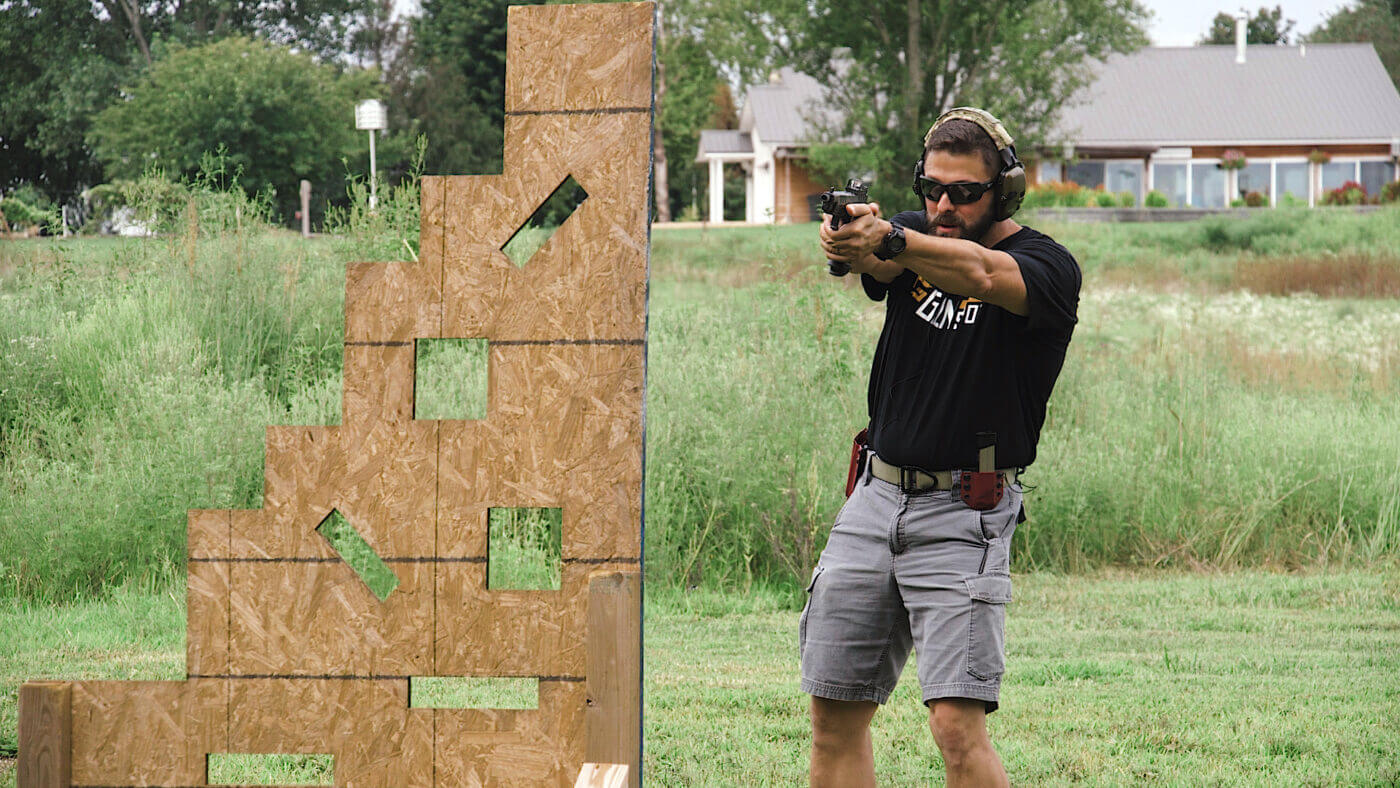
Just remember during your reloads to keep stand-off distance from your cover. As long as the situation allows, try to avoid slamming yourself up against your cover. Also, do not roll around with your back on the cover and turn your back to your assaulter. The chances of your survival go up if you keep your body facing the direction of an assailant, and just step behind cover. There will be a lot going on in a firefight and your adrenaline will be pumping no doubt, but you have to try to keep your wits about you and be aware of any movement down range.
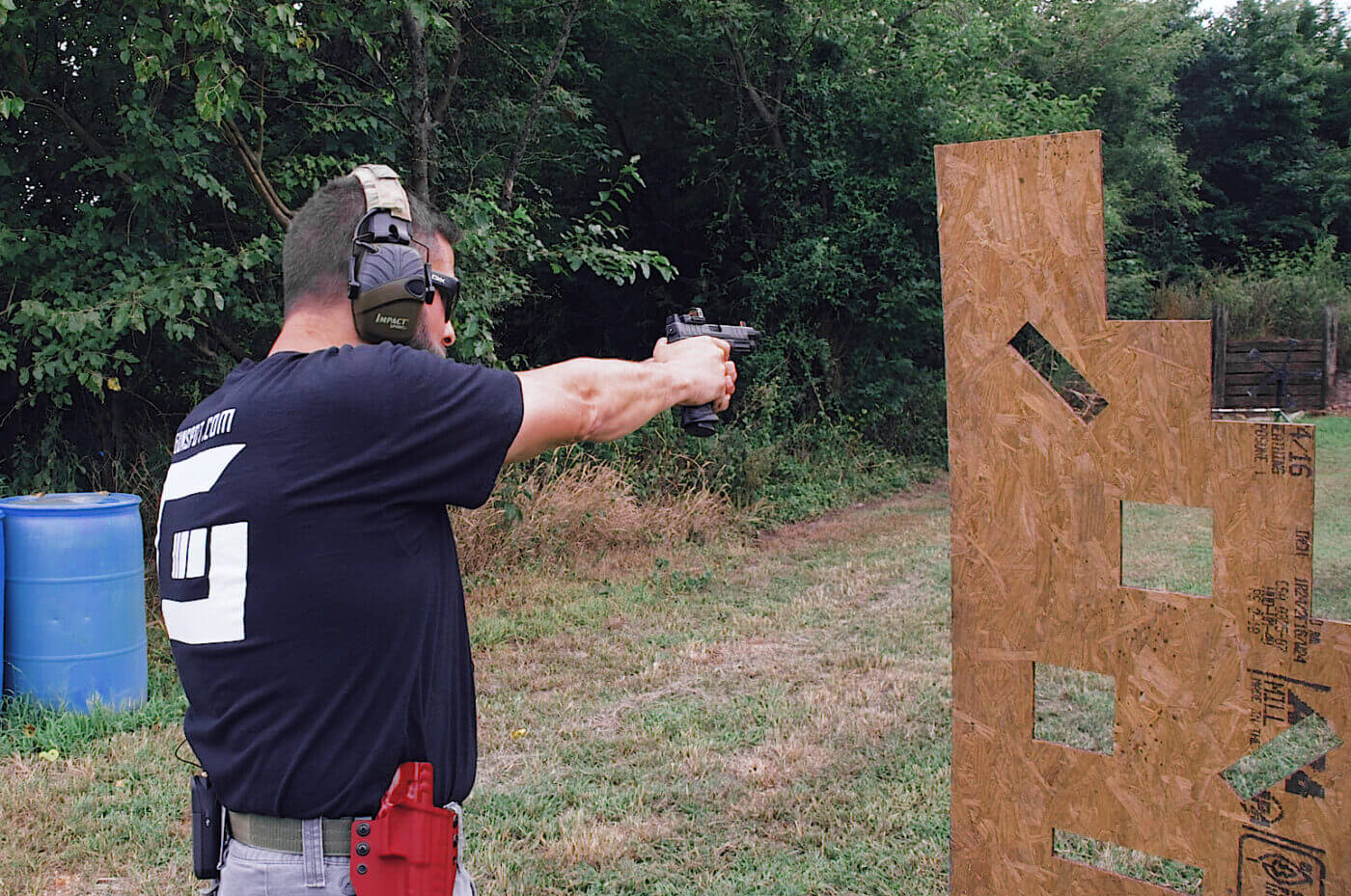
Conclusion
So, to recap, next time you’re practicing your reloads, by all means train to be fast, but start incorporating simply stepping behind some cover and then go back to slicing the pie. This is a life-saving muscle memory skill to have, so practice it and build it into your training sessions.
Editor’s Note: Please be sure to check out The Armory Life Forum, where you can comment about our daily articles, as well as just talk guns and gear. Click the “Go To Forum Thread” link below to jump in and discuss this article and much more!
Join the Discussion
Featured in this video
Continue Reading
Did you enjoy this video?

 67
67







